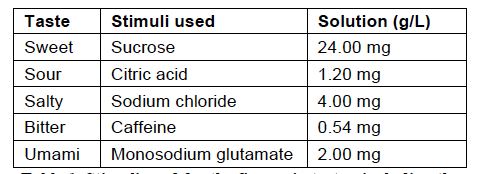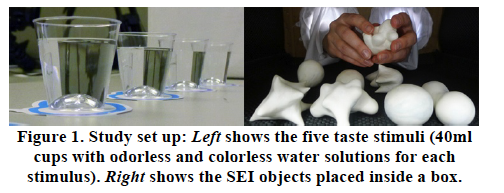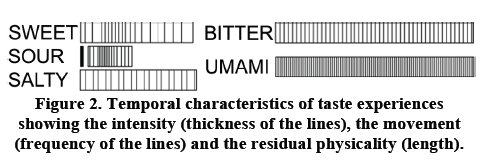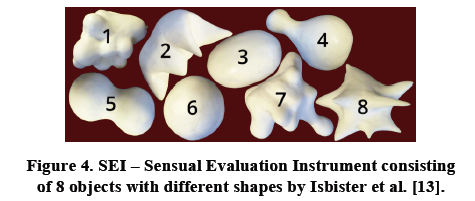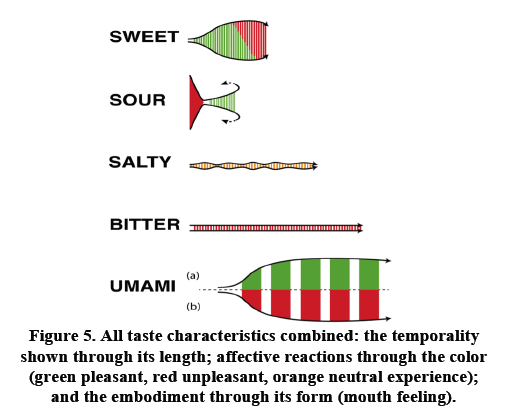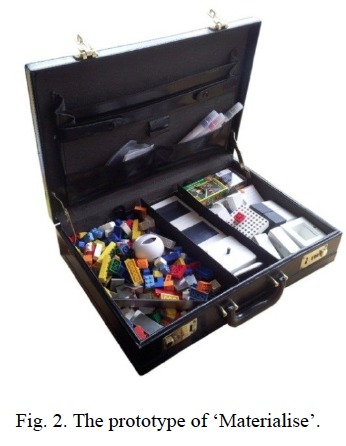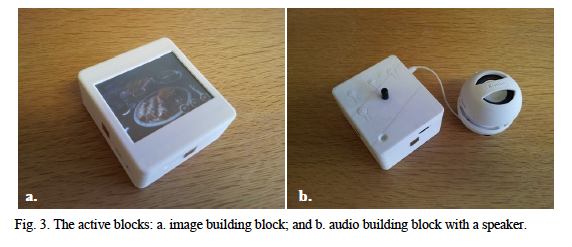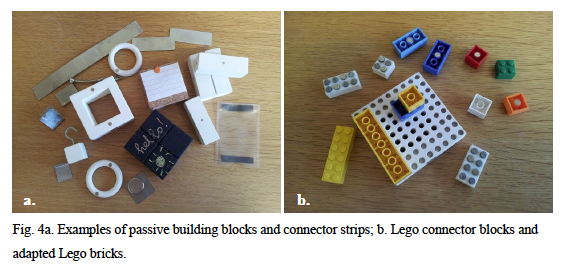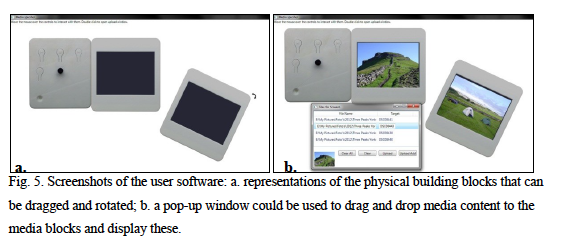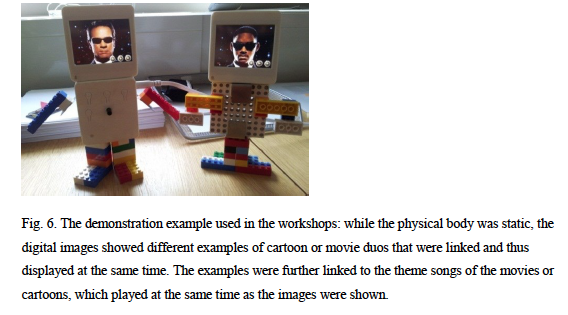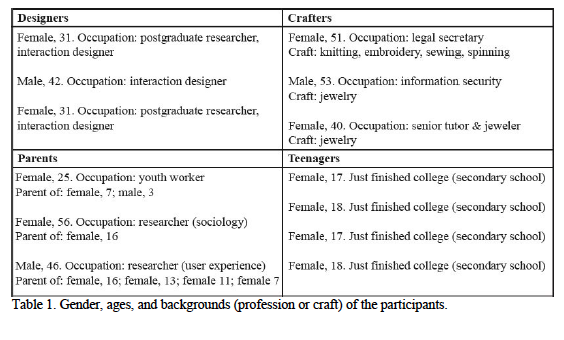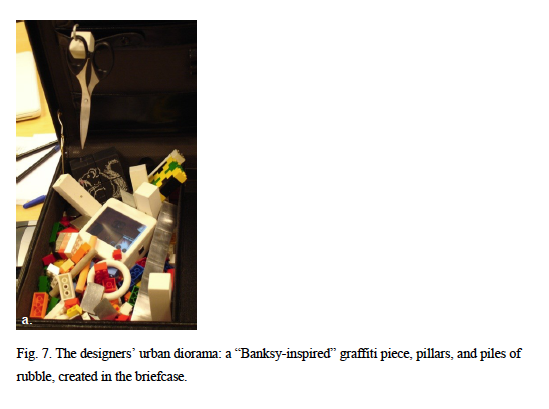Review Request – Salisbury: Initial Draft of a paper Entitled ‘Video Engagement as a Process of Seeking Cultural Value’
John Salisbury was a 1999/2000 MSc student in Ergonomics. He took the HCI Option. He was a serious, independent student with his own ideas and the spirit to defend them. No surprise, then, when he completed a PhD last year at Middlesex University. Its title is: ‘Playing with Value: Player Engagements with Videogames as a Negotiation of Net Cultural Worth’. A touching acknowledgement to my own commitment to theory was enough to endear me to the research, in spite of its unfamiliar domain.
John and I subsequently exchanged e-mails about his work and in particular about a paper ‘in preparation’, reporting some of his research. I offered to review the paper for this website, provided John made a specific request, which follows:
Review Request
John Hi!
This is a review request for my paper ‘Engagement as a process of Seeking Cultural Value’. The paper is in preparation, Version 1. I have some concerns, before proceeding to Version 2.
First, how to balance the methodology and its epistemological basis with the fit and relevance of the resulting theory, in favour of the latter? For example, I could make more references to other work, employing grounded Theory (so making the application thereof less susceptible to focus and criticism).
Second, other work may not be well enough integrated into the body of the theoretical outline, so making my results appear less convincing. Additional examples from my data might help here.
There are likely to be other issues of concern and I request that the aim of the review should be to expose such issues. I understand that my request and your review will be posted on the HCI Engineering website. However, the status of my paper as in ‘In preparation, Version 1 should be made explicit. Further, the version should not be cited without my prior consent. The IPR status of the paper is unchanged by its appearance on the website. Finally, there is no obligation on me to follow any suggestions made in the review, although I shall be pleased to reflect thereon in a manner consistent with the making of this request.
Thanks in advance – John Salisbury
Review
Videogame Engagement as a Process of Seeking Cultural Value
Empirical investigations of videogame play and videogame engagement are often delimited along demographic or genre lines. This paper summarizes an attempt to generate a theory of videogame play and engagement which is not restricted to arbitrary factors of types of players or types of games. In order to achieve this theory a version of Classic Grounded Theory (Glaser 1978) was employed.
The result reveals a highly generalized theory: that players engage with games if they can find a sense of net personal cultural value as they select, play and reflect on their play experiences. The theory is presented and explained and the contributing hypotheses are also presented and explained.
In conclusion it is felt that the methodology has produced a theory with reasonable fit and relevance, suggesting some utility to the fields of Game Design and Videogame Research. Further work is suggested which will clarify and possibly modify the theory to increase the perceived fit, relevance, and utility.
Categories and Subject Descriptors: K.8.0 [Personal Computing]: General
General Terms: Games
Additional Key Words and Phrases: engagement, qualitative analysis, flow, fun, videogames, identity, culture, Pragmatism, Grounded Theory Methodology
1. INTRODUCTION
This paper summarises the findings of a research programme that set out to empirically create a theory relating to individuals’ experiences of videogame playing.
John Long Comment 1Comment 1
1. Discipline and Discipline Problem
1.1 Research Problem
The paper fails to declare to which discipline, it is intended to contribute by way of the knowledge (‘theory’) it has acquired. It opts for the more general notion of ‘field’, which may be covered by a number of different disciplines, all with their own concepts and criteria etc. As a result researchers are unclear what to take away from the paper (what sort of ‘theory’ is being reported; what could/should be done with it?) and how to build on the research by way of extension, replication or validation. For those, who do not want to commit to the notion of ‘discipline’, ‘approach’ might be an alternative, provided it is made explicit enough for researchers to make a judgement as to how to take the research forward. With the same proviso, ‘following the model or method of another researcher’ might be yet another alternative and indeed even ‘my way’.
1.2. Illustrated Research Solution
Declare the paper’s related discipline/approach/model or method/way etc and its associated problem. Purely, as an illustration, the discipline might be science (Psychology perhaps) and its discipline problem one of understanding (here gaming/videogaming behaviour) by explaining the data collected (usually on the basis of an existing theory or somesuch) and predicting other data (on the basis of the theory being proposed). Alternatively, the discipline/approach/model or method/way etc might be engineering (for example, gaming/videogaming HCI behaviour) with a view to diagnosing and solving design problems (as in ‘gaming design’) by the use of models and methods or other forms of HCI design knowledge. Comparable research solutions could be constructed for other disciplines/approaches/method or model/way alternatives, such as: ethnomethodology; ludicology; culture studies; social psychology etc.
With the perspective that many contemporary empirical theories are too narrow in focus (e.g. Malone 1981 studied only elementary school children) , methodologically inappropriate (e.g. Sweetser and Johnson 2004 report having based part of their work on a “Grounded Theory” analysis of a 4 participant focus group), or place undue weight on folk developed assumptions (e.g. Brown and Cairns 2004 seem to take as their starting point that “immersion” is the ultimate objective of videogame players) and that a data driven approach with minimal a priori assumptions relating to types of games, types of players, or proposed engagements and objectives might have a chance of arriving at a useful theory with broad applicability, a data-driven methodology was selected, interpreted and employed.
Comment 2Comment 2
The concepts of ‘theory’ and ‘methodology’ here could be set up using the concepts proposed in Comment 1. This additional specification, if carried through into the rest of the paper, should help clarify for researchers how to balance the methodology and its epistemological basis with the fit and relevance of the resulting theory, in favour of the latter (John’s first concern). Also, how other work might be better integrated into the body of the theoretical outline (John’s second concern.
The methodology employed was an interpretation of Glaser’s (1978) Classic Grounded Theory Methodology (CGT), as Glaser positions CGT as a methodology that, if applied correctly, should produce a global dependant variable or central hypothesis supported by contributing variables and sub-hypotheses in a data-driven or empirical manner, that should account for most of the variation found in data related to the domain of study. As this methodology was employed then the resulting theory is a highly generalised concept accounting for players’ reported experiences of engaging with videogames, but with a systematic connection to sub-hypotheses and ultimately data related to the domain. It is hoped that in ‘grounding’ the hypotheses in information about our chosen domain that the theory developed can clearly account for the domain rather than account for arbitrary or ‘grand’ theory.
Comment 3Comment 3
If the theory provides an ‘account of the domain’, as stated, this is consistent with the account being a scientific (or scientific-like) one -see also Comment 1.
Sections later in this paper summarise the resulting global hypothesis and the sub-hypotheses that contribute to it, and in order that the reader is clear about how this theory was derived the following section explains the particular interpretation of Classic Grounded Theory (CGT) employed. The concluding sections of this paper explore if the utility of the theory with respect to the fields of videogame design and player research, and if such a general theory or the supporting hypotheses can be further modified or reformulated to be of greater utility to interested audiences and if so how. These concluding sections also attempt to place the theory in a broader theoretical context.
Ultimately, the contribution of this work is felt to sit in 2 areas. The first is in applying CGT in a domain quite different from those it might normally be applied to.
Comment 4
Comment 4
2. Method Problem
2.1 Research Problem
It is unclear what the product of the research is, concerning the Grounded Theory method, and so what researchers are intended to take away from the paper and how they might build on the research.
2.2 Illustrated Research Solution.
A number of possible solutions suggest themselves, concerning the GTM:
(a) Evaluate the GTM, that is, does it do what it claims to do and how well?
(b) Declare any difficulties experienced in applying the GTM correctly.
(c) Identify the actual GTM concepts used with respect to the total set of concepts. Provide a rationale for those concepts used and those concepts not used.
The other main contribution is to forcefully express the general hypothesis that players are seeking culturally expressed value though cycles of positive and negative identification with videogame play experiences, and that this value sum drives engagement.
Comment 5
Comment 5
3. Theory Problem
3.1 Research Problem
The status of the theory is unclear and so how it might be carried forward and built on by other researchers. The problem is related also to the Discipline Problem – see Comment 1 earlier.
3.2 Illustrated Research Solutions
(a) One view of theory validation is: conceptualise; operationalise; test; and generalise (Long, 1997). This research may have ‘conceptualised’ the theory. The theory, then, could be recast in terms of a model, which other researchers could operationalise, test and generalize and so develop it further. Even a declaration of the theory/model’s concepts would be a valuable outcome.
(b) Perhaps the theory is in a pre-conceptual stage. In this case, an initial conceptual model could be constructed and reported and other researchers could advance the conceptualisation.
2. INTERPRETATION OF CGT METHODOLOGY AS EMPLOYED
2.1 Overview of Grounded Theory
For various reasons the term Grounded Theory (GT) is applied to multiple research perspectives, including a form of analysis applied to qualitative data (e.g. Sweetser and Johnson 2004) or a means of analysing the behavior of individuals relative to a specific hypothesis (Brown and Cairns 2004; Fabricatore, Nussbaum, and Rosas 2002), delimiting the domain according to a priori hypotheses about what is important. Early in the programme of research which forms the basis of this paper the decision was made to understand the methodology in the broadest sense, and hopefully to develop a theory inductively (though perhaps more accurately abductively) derived from the domain of people playing videogames. This ‘inductive’ approach is most forcefully expressed by one of the co-originators of the term ‘Grounded Theory’, Barney Glaser (BG Glaser and Strauss 1967; BG Glaser 1978; B Glaser 1992).
Comment 6Comment 6
See Comment 4.
In this version of GT no a priori hypotheses are formed, as the objective of the methodology is to form hypotheses based on available data rather than to validate existing theory. In order to achieve hypotheses about the domain a methodology encompassing data collection, data analysis, and theory formulation is proposed.
Comment 7Comment 7
The expression ‘validating existing theory’ is relevant to Comment 1.
There are several methods within the methodology, and the understanding of those methods as they have been applied in this research are summarized here in order that the reader can both understand where the theoretical concepts came from and how this research might be differentiated from other similarly labeled work.
There are 5 methods or activities which make up the CGT methodology:
• Data collection
• Comparative coding
• Theoretical ‘memoing’
• Sorting
• Writing
Each method is intended to move the research from information about a domain to a coherent theory about what is going on in that domain.
Comment 8Comment 8.
Distinguish description/representation (of a domain) from theory. See also Comment 5.
These methods are not linear, sequential activities but methods which apply in different proportion at different times. The following subsections will describe how and when they are used while also describing how these methods were employed in the research described in this paper.
For reasons of brevity no attempt will be made in the following text to explore the merits of the methodology from an epistemological basis, rather the following subsections are provided to allow the reader a means of evaluating how the theory was derived in order to differentiate this research from other similar attempts. For a critique of the Grounded Theory methodology see Bryant (2007).
Comment 9Comment 9.
Criteria for evaluating the theory in this way would be useful here for other researchers.
2.2 Data Collection Method
Any information which is directly collected from the domain of study or is unequivocally concerned with that domain is useful and should be included. So where the thoughts and actions of people are concerned we might include formal interviews, informal conversations, focus groups, overheard conversations, diaries, and possibly observations, or applicable statistics, while other less textual sources might also provide useful insights. Deciding what to collect and when to use it is determined by the shape and direction of the current theory and progress of coding and memoing (see below). This ‘theoretical sampling’ approach helps to provide a degree of parsimony in the amount of data collected, as in linking data collection to data analysis and theory formation helps to ensure that only as much data will be collected as required. Relative to the process of coding (below) there are essentially two types of targets for sampling: ‘new’ kinds of case (by which we hope to generate new codes) and ‘similar’ kinds of case (by which we hope to flesh out the properties of existing codes).
The research reported in this research started by interviewing by opportunity (friends, relatives and colleagues), attempted to explore diary and observation data, further interviewed specific individuals (non-players, more ‘casual’ or more ‘hardcore’ players, and an increasing number of strangers with disparate tastes ), and included a few field noted observations about overheard and informal conversations. The total number of individuals who contributed either distinct codes or an illustration for a particular memo (post coding) was in the order of the mid 30s. The data was in the form of transcribed interviews, recorded but un-transcribed interviews, recorded observations, and field notes (the diaries proved unproductive).
Comment 10Comment 10.
Some might consider this form of data collection to be ‘informal’ or somesuch. John needs to categorise it at least in some way (acceptable to himself). There are two reasons. First, other researchers need to know for the purpose or inadvisability of replication. Second, its status will necessarily determine the status of the resulting theory. See also Comment 15.
2.3 Comparative Coding Method
The GT methodology grew out of research by Barney Glaser and Anselm Strauss (1967) which utilized a process they knew as ‘Constant Comparison’. This process is advocated as the coding method for CGT by Glaser (1978). The codes generated in CGT then are initially derived from comparing data to data. If an apparent part of the data appears to have a relationship with some other part then the nature of this relationship is noted as a code. Most simply then, codes are categories of data or properties of already identified categories. At a more complex level codes can be compared themselves producing meta or ‘theoretical’ codes. Coding is an attempt to reframe raw data, making the theory fit multiple cases rather than single interesting occurrences.
Codes were created in two ways in the research reported here, early in the programme transcriptions of the data were marked with subjective observations, which further into the programme (once the constant comparative emphasis was more clearly understood) were clustered into categories and properties which were subsequently added to in further iterations in the constant comparative manner described above. Few theoretical codes were created, but rather theoretical memos were created which accounted for the comparisons between existing codes. This way of coding with memos rather than specific theoretical codes was due in part to the software employed (Atlas.ti Anon. 1993), which made comparative codes or properties, and especially theoretical codes of codes, a little tricky, but in using memos to create theoretical codes rather than a specific ‘theoretical code’ facility of the supporting software, the result is assumed to be the same.
2.4 Theoretical Memoing Method
In the jargon of GT ‘memoing’ is the activity of interest, the main material of the methodology if you will. As the researcher iteratively collects data and codes it, and as they sort and write their outputs they should be constantly capturing each hypothesis they have about what it all means and how it all fits together. This central act of memoing drives every other activity. The researcher finds what to sample for next based on their theoretical observations about the codes they have generated, when to stop collecting and coding data based on how their memos are filling out, and it is the memos which are arranged (and further complemented) in the sorting process, which then yields a structured collection of memoed theoretical ideas to be written.
Memos are critical to two milestones found in the methodology. At some point the researcher will come to believe that their data collection and coding seem to be about a particular code. As the memos coalesce about this code the researcher will come to conclude that they may have identified what the domain may be about (in the jargon of the methodology they have identified the ‘core category’). Once this milestone is met the research moves from collecting data and coding openly for all possibilities and starts collecting data and coding specifically to selectively generate theoretical ideas about this code. The stopping rule for these selective iterations of coding is that once the researcher is no longer generating any new theoretical ideas they might be said to have theoretically saturated the core code. That is not to say that new codes might not be being generated by further iterations, but that as the researcher continues to sample, in accordance with their emerging theory new codes are interchangeable with old. Thus listing out all possible types of subject, perspective, context, tool, strategy, or whatever is not the point and developing categories of only those things that contribute to the emerging theory in terms of new theoretical ideas are important features in ensuring that the theory is developed parsimoniously. We might also say that in recognizing that not every case can be included we are leaving opportunity for any resulting hypothesis to be logically falsifiable.
This research recorded theoretical memos in the appropriate function of the software employed. Generally these memos consisted of short notes about what the codes might represent, as well as relationships between codes and possible targets for data collection. The core category selected for saturation by selective coding related to players’ felt identities and how these identities manifested as roles through which the player ascribed value to different game features. Memos were also raised relating these ideas to general theories drawn primarily from Social Psychology where appropriate, especially during selective coding and sorting. As explained below, the sorting process showed this concept of valorization of game features according to a player’s self sense to be somewhat inadequate in accounting for all the theoretical ideas raised, and as such was duly extended.
Comment 11Comment 11.
The reference to Social Psychology should be understood in relation to the issues raised in Comment 1.
2.5 Memo Sorting Method
Once the core category is felt to be suitably saturated, the collection of memos is not expected to be in a state that would allow for immediate publication, rather while most of the memos are expected to implicitly relate to the core category or how the core category explicitly relates to others, these relations are likely to lack a structure suitable for writing up into a clear publication. There are likely to be gaps and inconsistencies which will need to be dealt with before writing can happen, if one intends to present a coherent theory rather than an incoherent collection of observations. Sorting then is the process of creating a framework for the intended dissemination of the research findings and is performed in order to make as many of the theoretical ideas work towards explaining the derivation of the core hypothesis as possible.
It is likely that new comparisons will be noticed in the act of sorting and as such the process of memoing continues throughout. It is also possible that gaps exist that require some further rounds of data collection and selective coding. It is also possible that the core hypothesis may well need modifying in order to account for more of the theoretical ideas and codes than previously realised. In this sense sorting is critical and is not entirely equivalent to the process of expounding generalised observations which often occurs in ethnographic work (e.g. Carr 2005).
In this research the pre-sort core category which related to a players sense of identity and assumed socio-cultural role relative to game features was felt to be somewhat inadequate, in that that concept failed to account for the mass of data, codes and thus theoretical ideas relating to the cyclical process of engagement. As such the sort revealed that it was more reasonable to talk of players’ cycles of identifying with games at a feature level, which is the theory presented here. The sort was physically accomplished by printing out the electronically captured memos, complimented by hand written memos which were raised during the sort, which were repeatedly placed into piles until almost every memo was included and a writable structure of chapters and subdivisions was visible.
2.6 Theory Writing Method
After sorting, writing then is not the process of structuring an argument as much as it is the process of laying out the sorted theoretical memos in a text, ensuring that the connections and derivations are made clear for the reader. Also in this process other theories are related to the presented theory (which is also possible in the sort, where general theoretical ideas might help to contextualise the saturated theory).
As such the reader can assume that the sections of this paper that set out the theory are in fact directly representative of the sorted memos expanded upon and linked; this paper being a summary of a much more comprehensive thesis which literally contains all the expounded memos.
Comment 12Comment 12.
This expose is very clear to the reader at this level of abstraction. However, an example pulled through would help understanding of what John actually did. However, given the complexity of the process, it is unclear whether such illustration is possible. This comment is included for reflection.
Comment 13
Comment 13.
See Comment 4. The expose could identify all GTM concepts on their their first appearance. The list of used and unused concepts and the rationale for the difference could be part of a GTM evaluation and an output from the research. This addresses John’s first concern; but not in the way he envisages.
3. The Developed theory
Comment 14Comment 14
See Comment 5.
As proposed above, the following subsections represent the theoretical memos as an integrated text, with reference to specific data where necessary (and as space allows). Starting with the contributing hypotheses and leading to the composite or core hypothesis will hopefully allow the reader a means to evaluate the theory clearly that a top down presentation might obscure.
3.1 Process of Engagement
A major observation to make about player engagement is that it apparently does not happen as a singular event. The following subsection expands on the interim report published XXXXXX in which an early understanding of the methodology and early findings was published. The following differs from that published work in that the phases or stages were slightly different in the XXXX publication. What is common is that there is a phase of engagement that occurs before play, and the difference between the two presentations is due to greater saturation and borne out of a formal sorting process.
Essentially this sub-hypothesis is that there are 3 indistinct phases of engagement: Selection (before hands-on interaction); Play (actual hands-on interaction); and Reflection.
3.1.1 Selection
The mechanisms employed to select games are complex and depend on the particular individual and their sense of identifications. Tying the cycle of engagements to the sense of identity will be explored later in this report, in the section dealing with the core hypothesis. This sub-section and the sub-sections relating to playing and reflecting will focus on generalized patterns and procedures employed by individuals as they engage with a proposition.
Selection itself can be broken down into broad strategies, situated within contexts:
3.1.1.1 Selection of the singular activity of ‘videogame play’
Firstly we can talk of prospective players selecting videogame play, in current forms, as a potentially agreeable activity. This global point of selection can be best seen in the attitudes of those who reject videogame playing outright. Such individuals expressed attitudes suggesting that for some videogaming represents a male, juvenile, sedentary and solitary activity which is not for them, seeing themselves as variously adult, active, social and not male individuals. While some interest was expressed in novel developments in the products which militate the existing perceptions of gaming (primarily Nintendo’s attempts at introducing motion control and marketing which focused on social settings and players who were not necessarily male or juvenile), the non-gamer subjects had not made the investment of time, money, or effort in exploring these possibilities.
For those individual who had not rejected videogame play outright the data reveals a number of strategies employed and perspectives on what videogame activities they might actively seek. These selection criteria reach into a huge range of potentials for play, and are not simply the user finding an agreeable narrative or representation which is might be an easy assumption to make (Juul 2010). The following subsections explore some of the ‘whats’ or pre-play engagements made based on activities sought and some of the ‘hows’ or strategies employed in ascertaining these potentials. These factors will be revisited when discussing the derivation of the core hypothesis, later in this paper.
3.1.1.2 Selecting for an explicit context
Games are not played in a laboratory environment; they are played in a real-world context. Potential players often account for potential contexts of play and select games based upon those contexts. The data relating to the ways players recognize possible contexts of play before actual play occurs seem to be driven by primarily social factors.
That isn’t to say that prospective players are always seeking experiences which they can share with others, though this is not uncommon. Prospective players also recognize that there may be occasions when they might want an involving experience requiring an extensive commitment in terms of time and concentration possibly during unavoidable periods of solitude. In this sense a player might be looking to become ‘immersed’ in a game (though the term ‘immersion’ was only used by a single individual in this research) as a means of passing the time or avoiding boredom. These ‘anti-social’ sentiments are not shared by all; other subjects suggested that recognizing the potential commitment necessary in order to play certain types of games is the reason that they reject many videogaming activities, preferring to invest these resources in more ‘productive’ pursuits; a sentiment which will also be covered in more depth in later sections.
More social contexts are selected for when a player can imagine playing a game in the presence of or along with other players. As such a prospective player might select a game with performance or multi-player features. While a player might never actually get chance to play the game as a performance, or collaborate or compete with their peers, that a game provides the possibility is often a positive factor. Recognizing the possible tastes of witnesses or co-players is important in helping the prospective player determine the value of the game for social play, which will also be explored in the section of this paper which deals with ‘kinds of players’.
3.1.1.3 Selecting Specific Features
In selecting for a specific context we might expect a prospective player to be investigating the purported features of a game. Features which have a bearing on suitable contexts are not the only ones noticed. Prospective players explicitly or implicitly consider a great many design features. While ‘surface’ features are commonly attended to as suggested by Juul’s suggestion that a prospective player is first drawn to the ‘fiction’ of a game (2010), respondents also discussed ‘deeper’ features such as the type of challenge offered. One specific subject explicitly stated that he would eschew any game which might test his dexterity, preferring to engage in intellectual puzzles instead. Interviewees expressed such targets as graphical style and quality, game mechanics, activities including any overarching story or narrative, and challenge type. In fact it seems that any designed feature may be noted by a prospective player and used as a means of differentiation between possible offerings.
3.1.1.4 Selecting the Familiar
Selecting games according to familiarities seems to operate in two ways, selecting familiar game related features and selecting according to features not immediately related to games.
When a prospective player is selecting features based on their past experience of playing other games they are clearly drawing on their reflections about past experiences of play. This construction of predispositions is also noted by Carr (2005), and might be said to have been predicted by Pragmatist theories of engaging with pleasurable artifacts such as those of Dewey (1934). This act of selecting a game which promises experiences similar to those enjoyed in the past might account for the success of sequels, though obviously not all reflections are positive and can thus turn a prospective player off a certain set of features as well as on to them.
Another interesting facet of selecting according to the player’s past experiences is where a prospective player selects a videogame based on factors external to their videogaming experience. This is usually in the prospective player identifying with the subject matter (or fiction) offered by the game and may account for the successes of sports related properties and games based on films and television series. That is if a player feels that they are a fan of Football or Batman say, then they are more likely engage with games which include such themes. This principle can also act in the opposite direction, with familiar themes that the individual does not identify with acting to drive down the degree of engagement a prospective player has with the concept. For example, one interviewee expressed a dislike of Boxing as a justification for not liking beat-em-up style games. In fact he expressed that he was not someone who enjoys watching Boxing and so wouldn’t be someone who would like fighting games, which seems to be a sophisticated expression of identity, which will be covered later in this paper.
3.1.1.5 Selection Based on Trusted Opinion
The previous sub-sections dealt with what kinds of things prospective players might be evaluating as they select games to play. The following subsections deal with how prospective players get their impressions of games they haven’t yet played.
A clear source of information about what a game is like to play is to consult the opinions of those that have already played it. These opinions could be obtained from peers, reviews in the media, or other ‘expert’ opinion. In social groups where games and game play was seen as a valid topic of conversation information gleaned from the opinions of peers was most valued. However several subjects suggested that gaming was not often a valid topic of conversation, and so one of these subjects had formed a relationship with a clerk in his local game shop where the clerk had learned his tastes to such a degree that he trusted the clerk’s recommendations. Where media reviews were concerned, among the subjects that suggested that they did read such things there was a general impression that they were not as well trusted as peer recommendation, but were never the less used as a source of information about the features and overall quality of a game.
3.1.1.6 Selections Based on Marketing
Information sourced directly from the producers or publishers of videogames is another means by which potential players find out if a game might offer a suitable play experience. This could be information from the company websites of the game producing or publishing companies, media advertisements, media preview editorials, or even the game packaging. The amount of information sources consulted seems to loosely correlate with how much the prospective player identifies themselves as a game player. ‘Hardcore’ players may be aware of release dates and proposed features at a fairly fine grained level, while data from players at the other end of the hobby/commitment spectrum suggests that these players might only consult the game packaging as they browse games in a retail outlet.
The extent to which the player has investigated the promised features of a game may well influence their commitment at later phases of the engagement process. For example a player who might describe themselves as ‘hardcore’ who has tracked the development of a game from announcement through to sale, and who may well have engaged in the online fan community concerned with that specific offering, discussing hopes and fears for the final product, is less likely to give the game 2 minutes of their time before permanently deleting it from their hard disk (as the subject who downloaded games based on their title alone suggested he would).
That some less hobbyist players select games based on packaging, more often than not, suggests that they have very little understanding of the features of a game other than a theme and the positive description of the features commonly summarized on the packaging. The subjects who suggested that packaging information was their primary source of information seemed to select games by their theme (or ‘fiction’) more than any other features, even though this had in the past lead to disappointing play experiences.
3.1.1.7 Selection by Provenance
Where a game comes from can provide important information to a prospective player in helping them determine if it might be engaging. That is information about who made or published the game or who owns a copy of the game or gaming product can push up or pull down the engagement a player has with a game before they play it. If the game was developed by a team responsible for games that the prospective player is fond of, or the game is found in the collection of a friend the prospective player considers to have good taste, then the player is more likely to be engaged by the prospect of the game. Conversely if the game is developed or published by a company the prospective player considers to be producers of bad games or the game is found in the collection of someone considered to have a poor taste in games, then this provenance might act to drive down the individual’s engagement with the prospect of playing the game. Those prospective players who might describe themselves as gamers are more likely to know who produced a game and judge it on this knowledge, but such knowledge is also held, to some degree, by those who play more casually. For example one ‘casual’ subject suggested that Nintendo are more likely to produce games which are more aligned to what they are personally seeking than other publishers. Less hobbyist or ‘hardcore’ players are likely to trade games amongst their peers as a means of determining quality, essentially pooling agreeable games.
3.1.1.8 Selection by Availability
Often players might make no conscious decision to obtain a game; it is simply there. In this case the only decision the prospective player must make is whether to ‘have a go’ or not. In these cases many of the material costs are removed (such as time, effort or money spent to obtain the game) and the decision then only rests on whether the user feels that there might be other costs involved (embarrassment at playing a performance game in public say) relative to the benefits of playing (using our performance game example they might feel that in playing they become more socially connected to the other players). Where the context is less social (for example where the game is obtained cheaply, maybe as a bundled software product with a new device), the low cost of entry might have the player ‘give it a go’ where otherwise they might not. Judgment and engagement then rests on the later phases of engagement.
3.1.1.9 Selection by Trying
All other selection methods and criteria considered, there will be a point where the player starts playing the game. At this point engagement seems to go through a period of evaluation. Does the game meet up to expectations?
There is no clear cut off between a player’s initial evaluation and when they might be said to be playing ‘properly’, but there is enough evidence in the data to suggest that on occasion players have tried a game, decided that it wasn’t for them and stopped playing forever. Sometimes this is because they have encountered a game in a context that is not conducive to them seeing the benefits of continued play (such as one subject feeling that a game was far too hard to bother with having encountered it with players who were far more skilled than themselves and thus he became frustrated with his lack of skill), but more often it is simply that a game didn’t deliver what the prospective player imagined it might before they actually sat down to play it. Sometimes a player has minimal expectations and finds pleasure in their initial encounters. Sometimes though this pleasure is context dependant (such as individuals who wouldn’t normally play games, joining in with a group playing a game conducive to multi-player, party like activities), and once that context doesn’t exist anymore nor will they play anymore.
Occasionally though the player will find enough of what they thought they might get from the experience to remain engaged and to continue playing.
3.1.2 Play
While researchers such as Aarseth (Aarseth 2003) have argued that play must be the central object of study for games research, this project has essentially settled on a study of the conditions supporting engagement in play. That is the actual act of playing is bound into a social psychological praxis which informs the conditions of engagement; the actual engagement itself being a successful realization of the supporting factors of identification, expectation, context and so on. This is due in part to the differences in methodology, where the methodology used here deals with the heterophenomenology of reported player experiences Aarseth has traditionally focused on the artifact and their imputed meanings explored via personal play. That is much games research deals with the game and how it facilitates play while this research has developed a theory of how and why players make the choices they do; what experiences do games provide vs what kinds of experiences are players seeking to engage in. These are two sides of the same question.
As part of the process of selection, play and then reflection, the actual playing of the game is most simply stated as the period where a player considers them self to be an active player of the game. What factors hold them there for a session, or has the individual return for another session of play, are dealt with more completely in other sections of this paper. In terms of the phased process of engagement similar factors to those involved in game selection are constantly evaluated against the specific variable context during play, and if the weight of those factors becomes insufficiently positive then the player will stop playing. For example if the social situation changes to one that is insufficiently agreeable then the play may well stop to accommodate this change. Similarly other less dramatic changes might amass to stop play such as fatigue or hunger, or a player might have other concerns such as chores or work the time for which the play activities might be eating into. This is also alongside the possible changes within the game. The game might become too repetitive or too challenging for the player’s current state of mind, and this too will drive down the motivation to continue to play.
The conception of the motivations and de-motivations to play a specific game presented here is different from other conceptions which focus on such motivations as ‘immersion’ (Brown and Cairns 2004) or Flow (Cowley et al. 2008) as the ideas presented here should also account for players who are not looking for such deeply engaging experiences, as well as those that are. Indeed the data collected suggests that some players who have experienced the effects of ‘immersion’ or Flow like experiences in the past now reject many games or gameplaying contexts as they feel that losing track of time (say) with a game is more destructive and futile than beneficial and productive. As such some players deliberately seek out games which are not likely to take hours of their life at a time; games which are easy to pick up and put down.
3.1.3 Reflection
A player who has selected a game to play and has played it may continue to engage with the game afterwards. This engagement will take the form of explicit or implicit reflection. The player will be considering if playing that game was a positive or negative experience. They might even discuss the merits of the game amongst their social group. Indeed much of the data used in this research is essentially the reflections of players. It is apparent that while a player may select a game experience and play it, they might decide, on reflection that the experience overall is not worth repeating. Other non-negative reflections are related to the relative merits of particular games and will result in realizations which are fed back into future selections. Precisely what is being reflected on is explored in the following sections.
3.2 Identification with features
In the previous sections regarding the cycle of engagement a few hints are given as to what drives player engagement in this process. In general terms it seems that for each feature at each phase of the engagement the individual is determining if they are the ‘kind of person’ who might engage in such a game with such a feature. This identification operates for multiple pertinent features and seems to be summed or massed for any whole product. This sub-hypothesis then should help us understand how different people engage in different games, as if a player feels at any point that their perception of the fiction, graphical presentation, challenge type, and other features results in an overall positive engagement then they will be likely to play, where as if the same features are perceived, in summation, negatively then they are not likely to play.
One powerful example of how features are perceived in a socially relative personal way is of the adolescent subject who extensively played a certain JRPG (or Japanese Role-Playing Game) but felt the ‘super-deformed’ graphical style employed in much of the game was ‘babyish’. That is he seemed to feel that the graphical style was more suited to an audience younger than himself, but in summation the other features of the experience were sufficiently aligned to his cultural understanding of who he was and what he should be playing, to allow him to engage with the game despite the ‘babyish’ graphics.
What is also apparent from the data is that different individuals perceive the importance of features differently in terms of the weight they ascribe to these features. For example while one individual finds a degree of difficulty which will challenge their skills off-putting other players will deliberately play a game at its hardest setting as a personal challenge and would become fed up with a game at which they were always successful. I have related these weighted positives and negatives to a loose conception of ‘costs’ and ‘returns’. Costs might be loosely separated into material costs (money, space, portability, time commitment required) and social or cultural costs (is there a sense that in playing this I will perceive myself badly or I will be perceived badly by others in this context). Returns might be that a player is obtaining a ‘fun’ experience, whatever the particular user deems an acceptably fun experience to be (getting some exercise, inspiration, obtaining knowledge about the state of the art, experiencing an interesting narrative, and immersing oneself in an alternative world were examples encountered). Material returns are less difficult to suggest that they used to be. With the relatively recent introduction of motion control it seems that some players are interested in the fitness aspect which is used to market some products. Similarly self improvement and mental agility training game types are also apparently popular, suggesting that some players are looking for extrinsic returns such as enhanced mental fitness. This cost/benefit aspect of engagement suggests that the degree of overall engagement with a product could be said to be an aggregation of feature relative positions, or a summation of costs and returns to a net sum of overall ‘cultural’ (socially relative, personally expressed) value.
This socially developed sense of ‘kinds of people’ and what behavior is acceptable for such, which feeds into the cost/benefit sum, could be related to such Pragmatist ideas as Cooley’s ‘Looking Glass Self’ (1902); the theory that an individual’s sense of self is constructed by subjective reasoning about how the individual imagines they might be perceived by others in their society or immediate social context. We might say that so constructed the individual will behave in a way that seeks to reinforce this identity and seek to minimize any possibilities that they might be perceived poorly. We could also suggest that these expressions are expressions of cultural values (where an individual has learned suitable modes of conduct from their social interactions). That is not to say that an individual will embody all socially dictated grand cultural values (such as an abhorrence of murder say), though some of these types of value might impinge on some players’ engagement (and as such some players will state that they are uncomfortable playing a game where one plays at murder) but personally acquired, fine grained values (such as playing a game with cartoony graphics will reflect badly on an adolescent boy, but may reflect less badly on a woman in her 20s, or even that owning the latest videogame console reflects badly on a male dancer in his late 20s who believes that games are for dullards or a fashionable, female student in her teens who believes that games are for boys, but a technology savvy male, computing student in his 20s will feel remiss if he didn’t live in a house with all the latest hardware).
3.3 Value Seeking Process
In combination the hypotheses set out in the above sections suggest that players are engaging with games as collections of features with ascribed cultural value which are constantly evaluated and negotiated and the values summed throughout a course of engagement, from before the game is actively played, through active playing, to reflecting on the experience. The sense of cultural value is realized as a type of socially relative personal identification. So when an individual asks “Am I the kind of person who would play this game?” they are also asking “If I play this game, what does that say about me?” and “If I saw someone playing this game, what would that tell me about them?”, quite similar to Cooley’s ‘looking Glass self. So at each phase of engagement these implicit questions are being asked in slightly different ways.
3.3.1 Selection as investigating and finding potential positive cultural value
The space of potential gameplay offerings is not fully known by any individual, rather they form impressions of what offerings exist and what the nature of those offerings are from a variety of sources. These impressions are then contrasted with their sense of identification to determine if this activity is possibly one in which the individual feels that they can engage. The source of the information also helps to form this sense of identification, and the impression of the offering might not be formed simply on surface features such as themes, graphics, or characters, but at this stage, for many individuals, these features are more important here than they are at other phases of the engagement. The sources of information and methods used are those discussed in the relevant sub-sections above.
Essentially if an individual is sufficiently engaged by the prospect and can reconcile the investments required to play the game then they might seek it out and play it. If the investments are too great then they will play it if the investments are reduced, but otherwise will not seek it out (they are the kind of person who would play a game with those features in principle, but there is not enough time, it would be a waste of money, or it’s not worth upgrading hardware for are stated examples). If an individual is not engaged by the prospect of playing that game, then they will not seek it out or be inclined to play it without a context where the previously considered features become less relevant (not wanting to seem a ‘kill joy’ if everyone else in a social setting is playing together, that is they are not normally the kind of person who would play this game, but in this context they might as well participate and would then find it to be fun for example).
3.3.2 Engaging in play as long as a sense of positive cultural value persists
Once a player has reached the point of accepting an offering as suitable or agreeable (that they are likely to be the kind of person who would play such a game or with such a device), they will then be disposed to play it. This engagement as a state of disposition is not fixed, in that it is not such that a player who is engaged by the idea of playing will automatically then set about playing the game ‘fully’ (as the designer intended); rather it is such that the negotiations between the player’s sense of identification, the imagined reactions of their social context, and the actual experience of playing the game are fully initiated. Initially there is a sense of traversal from wanting to play the game to ‘actually’ or ‘really’ playing. This phase might be seen as ‘giving the game a chance’ and lacks a clear end unless the match between expectations and the actual experience of play shows that the game dramatically disappoints the player, at which point the value sum will be negative and the individual will stop being engaged and thus stop playing. We could say that for every new element that is introduced throughout the playing of a game the player will be ‘giving it a chance’, but this is increasingly subtle with the player also having extra investments in play (having spent the time to gain skill, develop characters, engage with the narrative or similar).
Once a player has selected an offering and then encountered that offering without being ‘put off’ by a negative sum of identification, they may be said to have recognized it as a game that they would be disposed to playing. However many games are not a simple interaction repeated over and over again but often progressively introduce new elements to the player as the player gains skill, tokens, or progresses through the story or different challenges and levels. As such for many games the player will be constantly evaluating the offering as they go; shifting their sense of value in light of new elements. Even though the terrain of the game is shifting, the player must always feel that they are engaged in an activity of positive net worth or they will stop playing or will not return to play in future sessions.
It is likely that as players move from the negotiated factors of selection to factors associated with play there is a shift of emphasis away from surface factors (thematic, graphics and such) toward ludic factors (game mechanic, challenge and such). That is players might find that they feel that they are the kind of person who would play a game with a particular graphical style say, and as they play the game become less concerned with the particular graphical style and more concerned with the actualities of playing the game; meeting the challenges or progressing through the story for example. This is the position of Aarseth (2004) who argues that the nature of any avatar is likely to fade into the background as a player focuses on ludic aspects of the game as they play. Likewise Juul’s (2010) assertion that the ‘fiction’ of a game is the first factor encountered and engaged with before other elements are considered is not completely rejected.
The degree to which they have already formed an identification will influence a player’s degree of perseverance, such that offerings with which the player has formed a strong personal connection (by developing characters or other ‘actors’ and objects, engaging with a story, or developing skill) will be much more resilient to problems such as a particularly difficult challenge, a bug, a displeasing plot direction, or any other unexpected negative experience. That is players can become more or less the kind of person who would play such a game as they acquire or lose any sense of personal connection. Similarly as a player invests resources to make progress in a game they become less likely to disengage until the player feels that this investment has resulted in a payoff, few people like to feel that they are ‘quitters’, however players do not like to feel that they are being forced to repeat gameplay elements they have already mastered or understood. This sense of progress and growth toward an arbitrary goal (a higher score, a new level, the next part of the story) can be related to an interpretation of Flow theory that suggests that ‘skill matching’ does not create engagement without the individual feeling that progress is being made toward a personally meaningful end (Csikszentmihalyi 1990).
Another type of development which is particularly true of multiplayer games is that of a social nature. Especially where online play might be concerned, the amount of socialization for some types of games (i.e. Massively Multiplayer Online games or MMOs) acts as a means of reinforcing some users’ engagements or a means of driving down engagement for others. To some players the appeal of having a set of trusted and decent playmates is apparent where the facility to play against others online is available. However, some are likely to find that they are not the kind of person who wants to micromanage other people in terms of competition schedules and training sessions, or that they are not the kind of person who wants to spend a large amount of time engaged in activities to support the play activity they identify with, and will become less engaged as the amount of required social interaction increases.
Another factor which might influence a player’s sense of engagement is a shift in context. External factors might have the player become less likely to feel that they are the kind of person who would engage in a game as other life pressures impinge on the experience. Take for example a player who is engaged by the degree to which the game facilitates social play; if the social context changes, for example by play mates ceasing to play, then the game will become less engaging as this feature or factor is less well supported.
3.3.3 Reinforcing the degree of sense of value by reflection
It is apparent that past experiences are fed back into future selections. This feedback does not seem to loop directly from putting one game aside to openly selecting the next, rather there appears to be an ongoing period of reflection, which seems to summarize the pros and cons of past experiences resulting in more carefully considered future selections.
It seems there are two types of reflection, implicit reflection and explicitly expressed reflection. That is there are times when an individual appears to be forming an opinion that can only be based on their past experiences without necessarily consciously analyzing their experience, and there are times when individuals’ experiences with various offerings can be heard being openly discussed respectively. The act of tacit reflection is difficult to demonstrate other than in the player, when quizzed, relating their preference (or dislike) of new propositions to past experiences, but struggling to put their finger on why they have this value position other than in relation to those same past experiences. It is when a user tries to relate the qualities of an offering to others that the reflective player must make value judgements as to what factors to highlight and espouse or reject. A number of observations could be made about the nature of reflection, but suffice it to say that much of the data used in this programme of research was based on interviews where the interviewer implied that the interviewee should explicitly reflect on their past gaming experiences and engagements. While this might seem introspective and thus a collection of possibly poorly realized subjective reports on interviewees’ tacit knowledge, hopefully the methodology employed has heterophenomenologically arrived at an account with some utility.
The less formal interviews in the data (along with some field notes on casual observations made) reveal that in discussing which experiences individuals found engaging, there is a degree of rhetoric involved. Individuals expounding the merits of the experiences they engage with and those that they do not; occasionally attempting to convince the other of the merits or faults of games they have played, which serves to amplify the sense of identification and hence degree of engagement.
Comment 15
4. conclusions
Hopefully, the summary of the theory provided above gives the reader enough information to be able to decide if these hypotheses make sense, and if the main hypothesis of a cyclical process of seeking cultural value fits the explored domain. Obviously the methodology employed focuses on certain aspects of a player’s experience. So no sense of a player’s emotion is considered explicitly, for example. Many apparent omissions are likely due to them being expected in the data due to a priori positions, as for example little mention was made by subjects of their preferred emotional states, other than a game should be fun or interesting and not boring.
A small (9 respondent) survey of interested parties asked to review a very brief summary of the results reveals that the degree of fit and relevance is good with two caveats. These caveats are that the short presentation of the theory only seemed to account for extensive cycles of engagement and not one off experiences which might still be deemed engaging, and that the result is an obvious truism. Hopefully this more extensive presentation of the theory helps to demonstrate that to some extent the one-off interaction is included as an extreme case (where the individual is the kind of person who would play that game in that context, but not necessarily in others), while the charge that the theory is an obvious truism is not supported by the empirical literature, as there seems to be very little which deals with concepts of a process of finding engagement in videogames by a constantly evaluated or negotiated sense of cultural value. So if this theory is a truism it seems to have little impact on much empirical research into player experiences, maybe because it has not been stated clearly.
5. discussion
A pertinent observation about player engagement is made by Carr (2005). In attempting to account for an observation that girls in a specifically convened female only gaming club Carr notes that “Different people will accumulate particular gaming skills, knowledge and frames of reference, according to the patterns of access and peer culture they encounter – and these accumulations will pool as predispositions, and manifest as preferences.” while “Preferences are an assemblage, made up of past access and positive experiences, and subject to situation and context.”, which seems to be quite closely related to the theory presented here. This observation is substantively different from say those of Malone (1981) and subsequent multi factor theories as it does not state that players engage with Challenge, Curiosity and Fantasy (or some other factors such as novelty and spectacle; excitement of combat; game characters; persistence; exploration; advancement; unraveling of puzzles; building, creating and controlling; humour; relation to one’s hobby or interest; audiovisual quality; imaginary world; and winning (Ermi and Mäyrä 2003)), but gives us some indication of what process a player goes through in arriving at the specific combination of factors that engages them.
In terms of related work from other domains McCarthy and Wright (2004) have taken a theoretically driven approach which has arrived at similar conclusions drawing for Pragmatic theory. That is the research presented in this paper was empirical abductive research, where as McCarthy and Wright seem to have used a theoretical deductive approach, but we have arrived at a position which neatly fits into a Pragmatic position. Where the theory in this paper relates the engagement with videogames to Cooley’s ‘Looking glass self’ and notes that engagements are cyclical and sit within a social context McCarthy and Wright take theories from Dewey (1934) and Bakhtin (1993) to arrive at related conclusions about the felt experience of the use of technology in general. One point of similarity is that they also recognise that an engagement is not simply a single (or repeated) instance of use, but also contains expectation and reflection, placing the experiencing subject and the object of experience in the broadest context. The breadth of this context extending out into personal conception of personal meaning and cultural value of the individual’s life, not just their life related to the technological artifact. This consideration of the overall felt experience (history, reflection, context) of the individual then determines the degree of meaning and value they then apply to the experience they are having as they have it.
So is a theory that players must be able to find the value in playing as a kind of investment of cultural negatives in order to make net cultural gains useful?
As a means of reframing the problem of Game Design to consider the broad cultural context of different player perspectives, some surveyed games professionals have shown an interest. However it seems apparent that some sectors of the industry are well aware that users must identify themselves as potential players and are already extending their thinking to traditionally under exploited kinds of players (e.g. Nintendo’s successes with products that purport to promote mental and physical fitness, and play in a social context). Certainly recent attempts at marketing games seem to focus on the player as much as the game, in a seeming attempt to demonstrate to the user what kinds of people would be players of the games and devices being released.
As a means of framing understanding of what engages players, it could be suggested that the core hypothesis is too broad; so inclusive as to describe all human experience of entertainment products at a macro level, with little to say about individual cases of subjective engagement. However the supporting hypotheses and how they interrelate could be said to provide a meso level description of engagement which hopefully helps us understand individual cases more clearly.
It is obvious that more work is required. The summary presented in this paper is necessarily quite brief. It is immediately apparent that each contributing factor or hypothesis could be explained in much more detail, with reference to the data from which it was derived. An effort will be made to disseminate these detailed descriptions at a later date. Similarly while an attempt was made to saturate a small number of critical hypotheses, other hypotheses which might be of significant interest to the fields of design and research are relatively under saturated; as such further research to flesh out these ideas will be needed. An attempt to translate these theoretical findings into some practical artifacts would both help to validate the theory to some extent and to provide further operational information for design practitioners.
6. REFERENCES
AARSETH, ESPEN. 2004. ‘Genre Trouble: Narrativism and the Art of Simulation.’ In FirstPerson: New Media as Story, Performance, and Game. Cambridge, MA: MIT Press.
ATLAS.TI SCIENTIFIC SOFTWARE DEVELOPMENT GMBH. 1993. Atlas.ti. Windows. Atlas.
BAKHTIN, M. 1993. Toward a Philosophy of the Act. 1st ed. Austin: University of Texas Press.
BROWN, EMILY, AND PAUL CAIRNS. 2004. ‘A Grounded Investigation of Game Immersion’. In CHI ’04 Extended Abstracts on Human Factors in Computing Systems, 1297–1300. Vienna, Austria: ACM.
BRYANT, ANTONY. 2007. The SAGE Handbook of Grounded Theory. Los Angeles ;;London: SAGE.
CARR, D. 2005. ‘Contexts, Gaming Pleasures, and Gendered Preferences’. Simulation & Gaming 36 (4) (December): 464–482. doi:10.1177/1046878105282160.
COOLEY, CHARLES. 1902. Human Nature and the Social Order. New Brunswick (U.S.A.): Transaction Books.
COWLEY, BEN, DARRYL CHARLES, MICHAELA BLACK, AND RAY HICKEY. 2008. ‘Toward an Understanding of Flow in Video Games’. Comput. Entertain. 6 (2): 1–27.
CSIKSZENTMIHALYI, MIHALY. 1990. Flow : the Psychology of Optimal Experience. 1st ed. New York: Harper & Row.
DEWEY, JOHN. 1934. Art as Experience. Perigee Trade pbk. ed. New York: Perigee Books.
ERMI, LAURA, AND FRANS MÄYRÄ. 2003. ‘Power and Control of Games: Children as the Actors of Game Cultures’. In Level Up: Digital Games Research Conference, 234–244. Utrecht.
FABRICATORE, CARLO, MIGUEL NUSSBAUM, AND RICARDO ROSAS. 2002. ‘Playability in Action Videogames: A Qualitative Design Model’. Human-Computer Interaction 17 (4) (December): 311–368. doi:10.1207/S15327051HCI1704_1.
GLASER, BARNEY. 1978. Theoretical Sensitivity: Advances in the Methodology of Grounded Theory. Sociology Press, Mill Valley, CA.
———. 1992. Basics of Grounded Theory Analysis. [S.l.]: Sociology Press.
GLASER, BARNEY, AND ANSELM STRAUSS. 1967. Discovery of Grounded Theory. Sociology Press, Mill Valley, CA.
JUUL, JESPER. 2010. A Casual Revolution : Reinventing Video Games and Their Players. Cambridge MA: MIT Press.
MALONE, THOMAS. 1981. ‘Toward a Theory of Intrinsically Motivating Instruction’. Cognitive Science 5 (4) (October): 333–369. doi:10.1207/s15516709cog0504_2.
MCCARTHY, JOHN, AND PETER C. WRIGHT. 2004. Technology as Experience. Cambridge Mass.: MIT Press.
SWEETSER, PENELOPE, AND DANIEL JOHNSON. 2004. ‘Player-Centered Game Environments: Assessing Player Opinions, Experiences, and Issues’. In Third International Conference, Proceedings. Eindhoven: Springer Berlin / Heidelberg.


